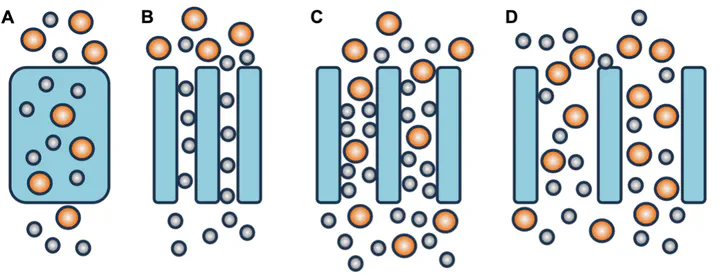Recent Advances in Microporous Materials Membrane for Hydrogen Separation against Light Gases
 A schematic of the possible gas transport phenomenon through a microporous membrane: solution-diffusion (A), molecular sieving (B), surface diffusion (C) and Knudsen diffusion (D)
A schematic of the possible gas transport phenomenon through a microporous membrane: solution-diffusion (A), molecular sieving (B), surface diffusion (C) and Knudsen diffusion (D)
Abstract
With the pressing concern of the climate change, hydrogen will undoubtedly play an essential role in the future to accelerate the way out from fossil fuel-based economy. In this case, the role of membrane-based separation cannot be neglected since, compared with other conventional process, membrane-based process is more effective and consumes less energy. Regarding this, metal-based membranes, particularly palladium, are usually employed for hydrogen separation because of its high selectivity. However, with the advancement of various microporous materials, they could challenge the status quo of the metal-based membranes since they could offer both high hydrogen permeability and selectivity while also relatively cheaper to be produced. In this article, the advancement of five main microporous material membranes, namely silica-based membranes, zeolite membranes, carbon-based membranes, metal organic frameworks/covalent organic frameworks (MOF/COF) membranes and microporous polymeric membranes are extensively discussed. Their performances for hydrogen separation are then summarized to give further insights regarding the pathway that should be taken to direct the research direction in the future.
Type
Publication
ChemRxiv